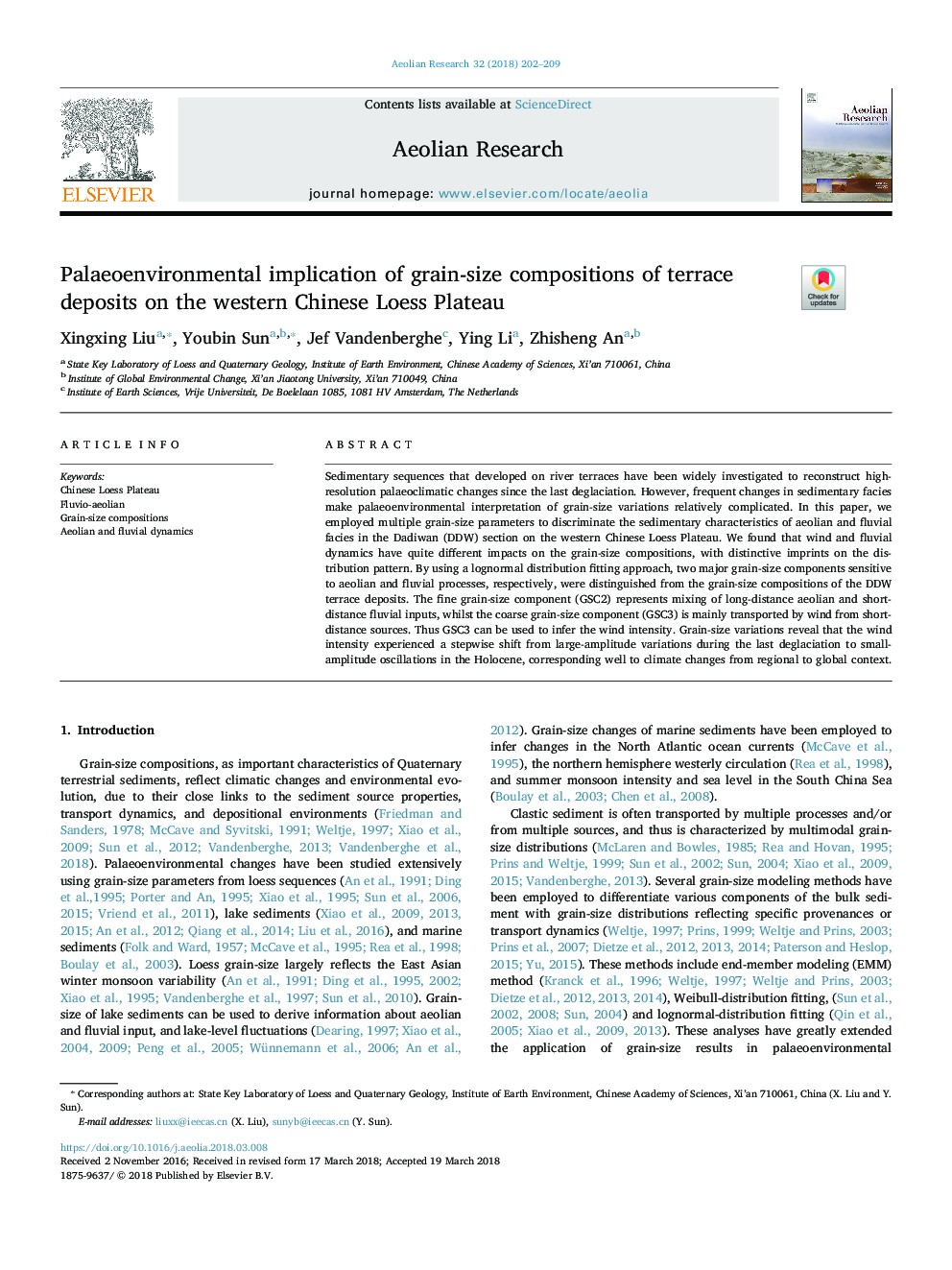| Article ID | Journal | Published Year | Pages | File Type |
|---|---|---|---|---|
| 8906255 | Aeolian Research | 2018 | 8 Pages |
Abstract
Sedimentary sequences that developed on river terraces have been widely investigated to reconstruct high-resolution palaeoclimatic changes since the last deglaciation. However, frequent changes in sedimentary facies make palaeoenvironmental interpretation of grain-size variations relatively complicated. In this paper, we employed multiple grain-size parameters to discriminate the sedimentary characteristics of aeolian and fluvial facies in the Dadiwan (DDW) section on the western Chinese Loess Plateau. We found that wind and fluvial dynamics have quite different impacts on the grain-size compositions, with distinctive imprints on the distribution pattern. By using a lognormal distribution fitting approach, two major grain-size components sensitive to aeolian and fluvial processes, respectively, were distinguished from the grain-size compositions of the DDW terrace deposits. The fine grain-size component (GSC2) represents mixing of long-distance aeolian and short-distance fluvial inputs, whilst the coarse grain-size component (GSC3) is mainly transported by wind from short-distance sources. Thus GSC3 can be used to infer the wind intensity. Grain-size variations reveal that the wind intensity experienced a stepwise shift from large-amplitude variations during the last deglaciation to small-amplitude oscillations in the Holocene, corresponding well to climate changes from regional to global context.
Keywords
Related Topics
Physical Sciences and Engineering
Earth and Planetary Sciences
Atmospheric Science
Authors
Xingxing Liu, Youbin Sun, Jef Vandenberghe, Ying Li, Zhisheng An,
